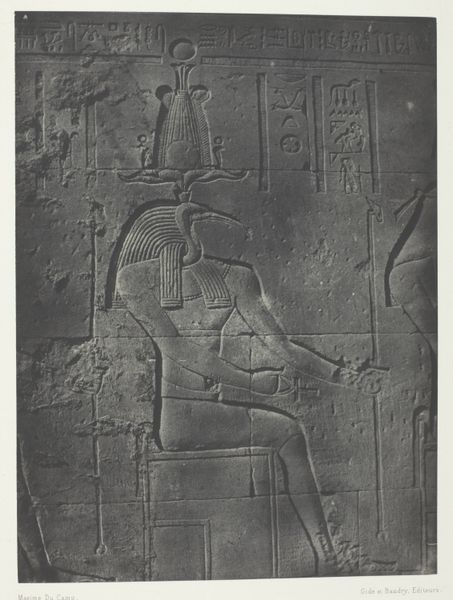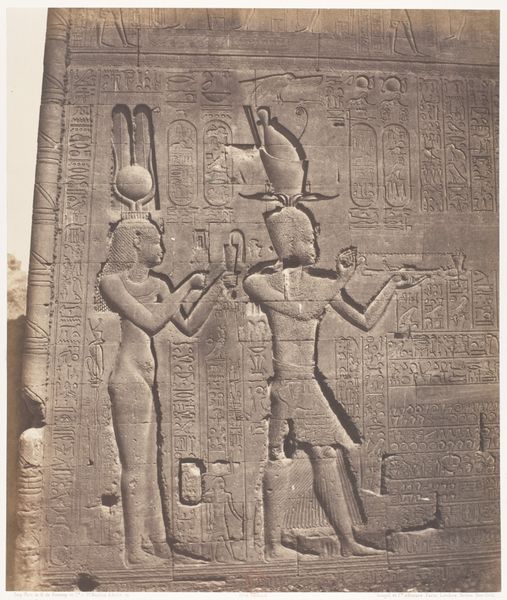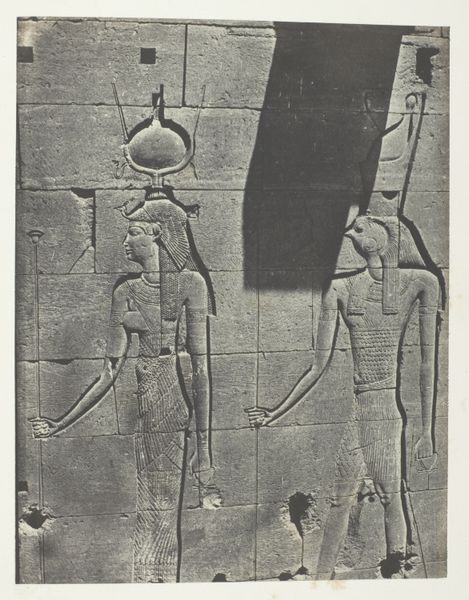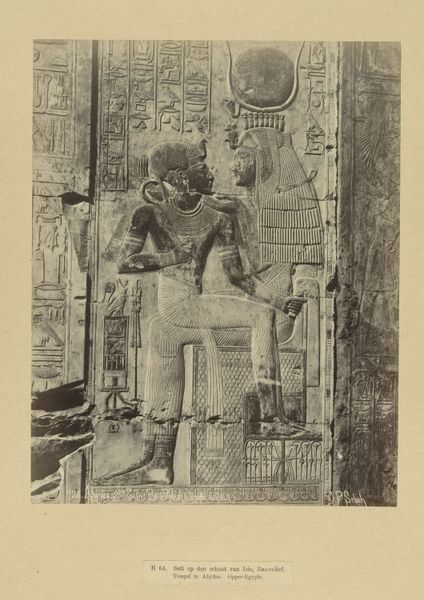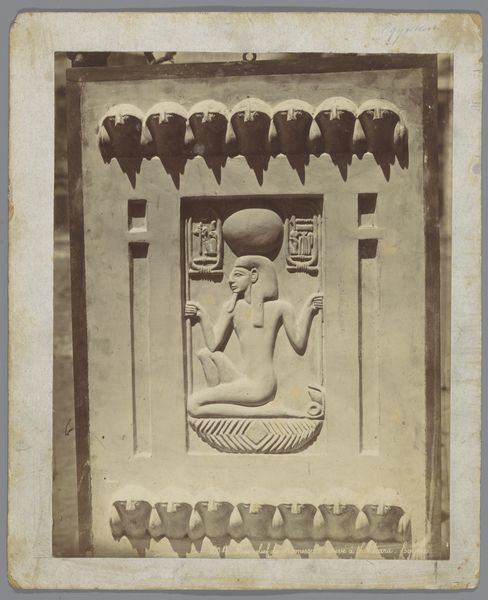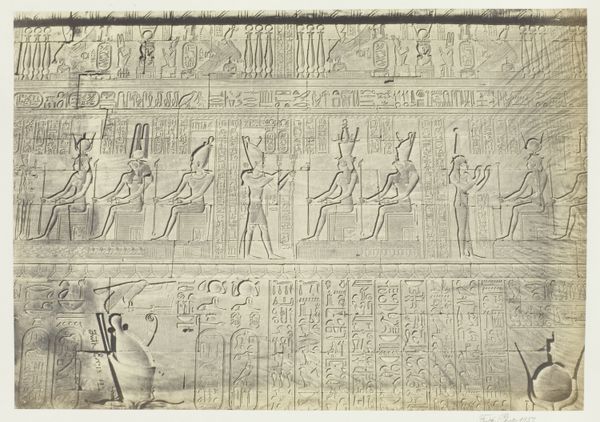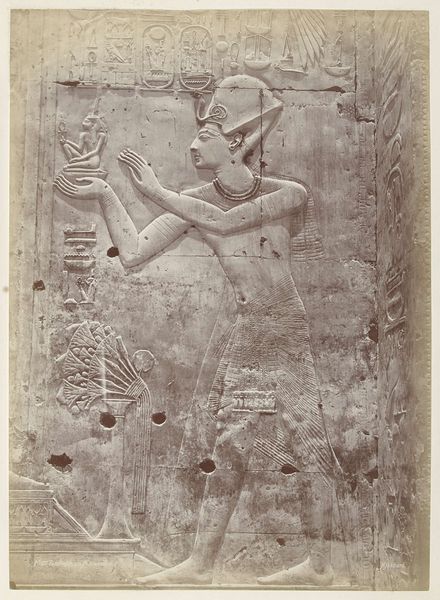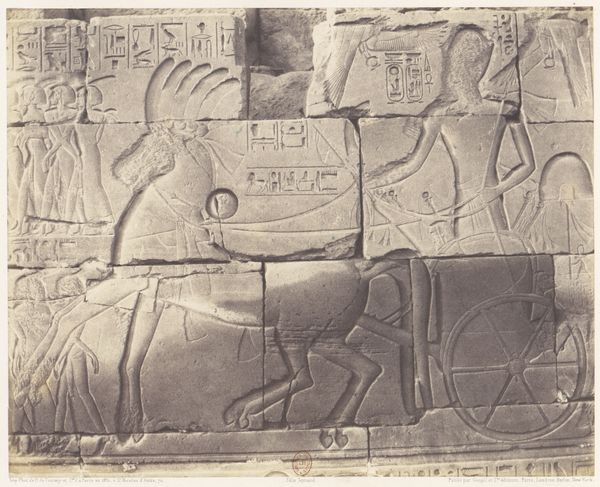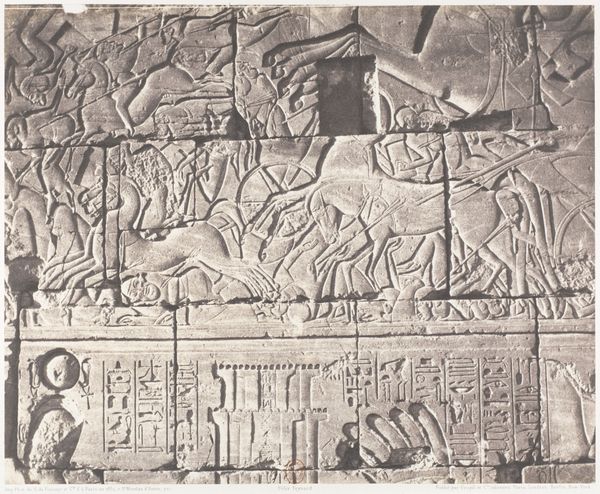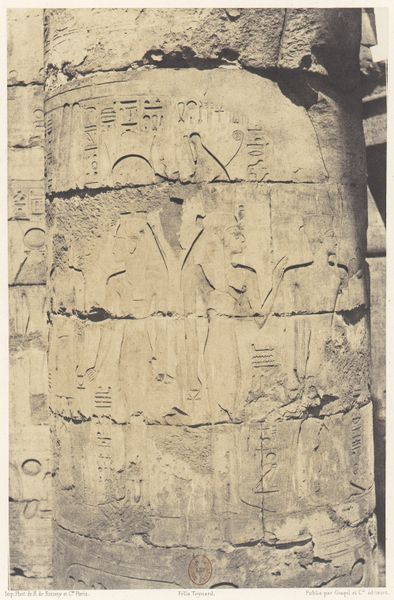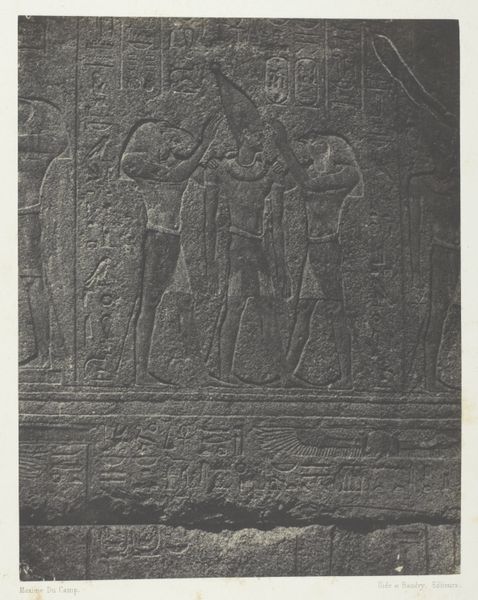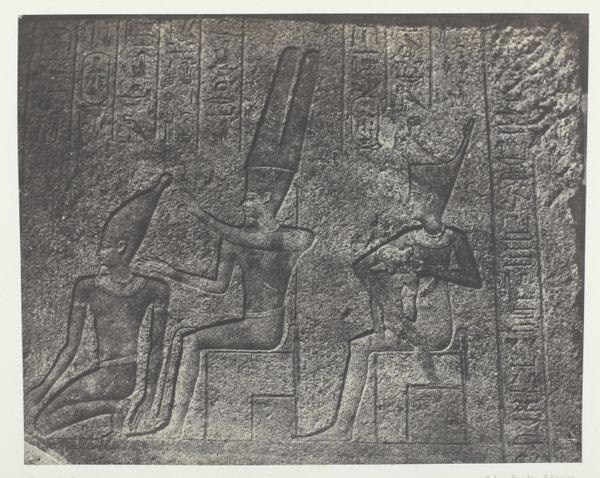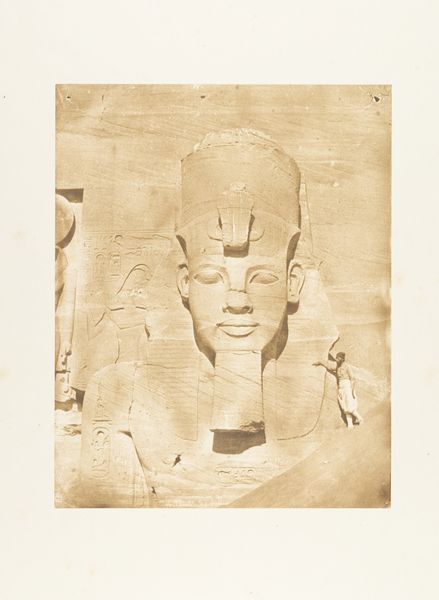
Kalabscheh, sculpture de la façade postérieure du temple. 1849 - 1851
0:00
0:00
relief, photography, sculpture
#
portrait
#
relief
#
ancient-egyptian-art
#
photography
#
geometric
#
ancient-mediterranean
#
sculpture
#
academic-art
Dimensions: Image: 8 3/4 × 5 3/4 in. (22.2 × 14.6 cm)
Copyright: Public Domain
This is a photograph of a sculpture from the Kalabscheh temple, taken by Maxime Du Camp in the mid-19th century. Du Camp was part of a wave of European travelers documenting Egypt, then under Ottoman rule, during a period of intense colonial interest. This image, like others from the time, offers a glimpse into how Western perceptions of Egyptian culture were being shaped. The sculpture itself, with its depiction of a pharaoh or deity, represents a complex intersection of power, religion, and identity. Consider how this image may have been received by different audiences – the European viewer, perhaps seeking exoticism, versus the Egyptian subject, experiencing a form of cultural representation shaped by colonial agendas. What does it mean to photograph and circulate images of cultural artifacts? What stories are told, and whose perspectives are centered or erased in the process? The photograph serves not just as a record, but as a potent symbol of cultural exchange and the power dynamics inherent in how we interpret history.
Comments
No comments
Be the first to comment and join the conversation on the ultimate creative platform.
